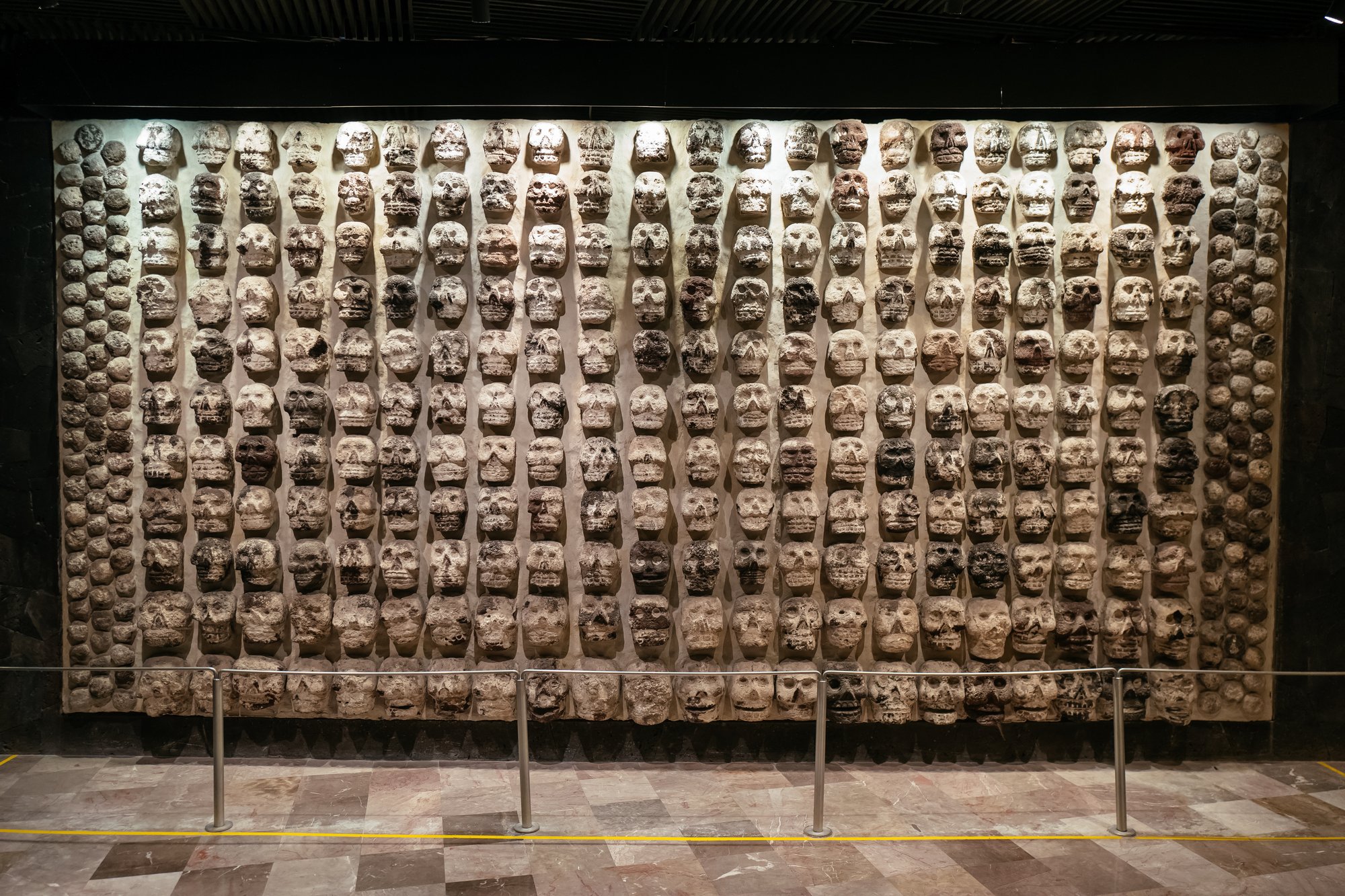#archaeologicalsite #visited
## Background
The Templo Mayor was the site of the primary temple of the Mexica people of [[Aztec Empire#Tenochtitlan]], built atop a swampy island in Lake Texcoco, and as such was the heart of the largest and most powerful city in Mesoamerica prior to the Spanish conquests in the 1500s.
The location of the Templo Mayor was said to be the exact spot where the god Huitzilopochtli gave the Mexica people his sign that they had reached the promised land: an eagle on a nopal cactus with a snake in its mouth – a symbol featured now on the Mexican flag.
After the destruction of Tenochtitlan, the Templo Mayor was mostly disassembled to use as construction materials to build the Spanish colonial city that took its place, including the [[# Mexico City Metropolitan Cathedral]].
The location of the Templo Mayor was lost until the late 20th century, when workers for the Comisión Federal de Electricidad (CFE) found a massive stone disk from the 1400s depicting an Aztec goddess, Coyolxāuhqui (a younger sister of Huitzilopochtli). Further excavations (including the tearing down of 13 historic buildings) found over 7,000 artifacts as well as the remaining ruins of the Templo Mayor.
## Photos

*(June 17, 2018) Stone tzompantli or skull rack of the Templo Mayor, representing sacrificial victims.*
<small><a href="Photography/Leica/Leica Q.md" class="internal-link">Leica Q</a>, 28mm, f/2.8, 1/60s</small>

*(June 17, 2018) Stone sculptures in the Templo Mayor.*
<small><a href="Photography/Leica/Leica Q.md" class="internal-link">Leica Q</a>, 28mm, f/5.6, 1/60s</small>